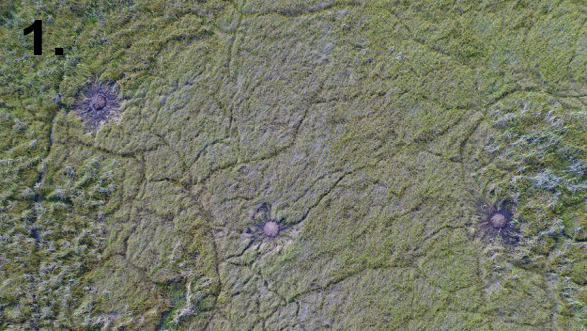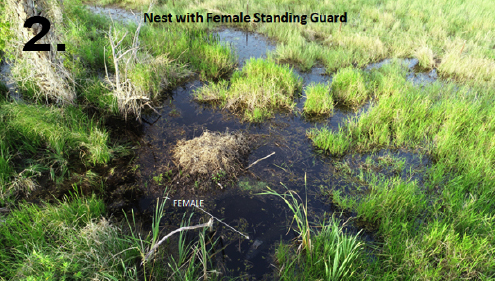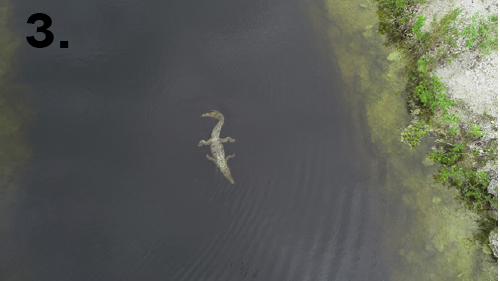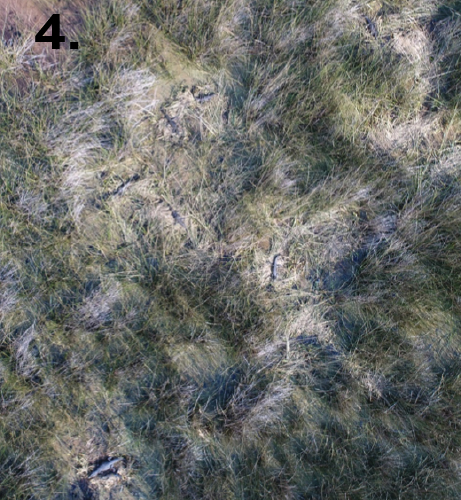Virtual UAS WorkshopVirtual Unmanned Aircraft Systems (UAS) Workshop With the postponement of
the 26th CSG Working Meeting and the Drone Workshop until May 2021,
we wish to avoid having CSG members miss out on information that could
potentially assist their research, management and conservation efforts in the
interim. To that end, and in keeping with our original goal of establishing an
Unmanned Aircraft Systems (UAS) community of practice within the CSG, we are
providing a range of resources here. We intend for this to be an open and interactive
forum, and we encourage submissions and input from participants. (Information on submitting content is in the Q &A section - see below). The 1st Live Chat was held on 18 September 2020. Moderated by Raymond Carthy, Andrew Ortega, Carlos Piña and Lonnie McCaskill, the event attracted 65 participants from an estimated 13 countries, and lasted for almost 2 hours. The featured speaker, Jason Holmberg, gave a fascinating presentation (“Wildbook: AI Collaboration for Wildlife Research”) on his work with WildMe.org and the Wildbook software used to individually identify animals. Wildbook works by using computer algorithms to classify known animals and their markings, much like the way that fingerprinting is used. Animals such as zebra, giraffe, whales and whale sharks are the focus of current tracking projects. Using photographs of individual animals from researchers and citizen science volunteers and running them through the Wildbook software can help track those individuals. The 2nd Live Chat, held on 16 October 2020, featured a presentation by Robin Andres Poches Franco (General Manager of Pochitroniks) on "Development of Radio Tracking Using Drones". The 3rd Live Chat, held on 13 November 2020, featured a presentation by Mauricio Gonzalez-Jauregui (Autonomous University of Campeche) and Jose Antonio Barao-Nobrega (Operation Wallacea) on "Upgrading Drones with Low-Cost Autonomous Devices to Track Multiple Signals from VHF Transmitters at the same Time". The 4th Live Chat, held on 18 December 2020, featured Marissa Tellez ("Utilizing drone technology to monitor crocodiles, their habitat and adjacent wildlife of Placencia Lagoon in southern Belize") and Matt Brien ("Catching Saltwater crocodiles using drones"). A recording of the 1st Live Chat is on Youtube. A recording of the 2nd Live Chat is on Youtube. A recording of the 3rd Live Chat is on Youtube. A recording of the 4th Live Chat is on Youtube. Our workshop-related activities have seen the inception of collaborative efforts to do similar work on crocodile species with scute patterns and body shapes. It is the Drone Working Group’s goal to bring together people who are using drones in their crocodile conservation field work, to promote ideas, technology, and best practices more quickly through collaboration. It is hoped that live chats will be held regularly in the future, and we are already lining up presentations on requested topics. Any feedback or suggestions for other live chat sessions would be greatly appreciated, and the links on the CSG Drone Workshop website are always open to submit presentations and to post recent publications. Your engagement will help us provide the information you need to use this technology to advance crocodilian research, conservation, and management objectives. 2. Introduction to UAS 2.1. Introduction to Unmanned Aircraft Systems - platforms, sensors, data processing. Andrew Ortega and Ray Carthy (watch video) 2.2. Drones as a tool for crocodilian conservation and research: "Learning to Fly". Lonnie McCaskill (watch video) 2.3. Best practices. (download pdf) 3. Research, Management and Conservation Applications These short video presentations demonstrate how some CSG members and other researchers have been using drones in their work. 3.2. Drones as a tool for nest monitoring. Carlos Piña (watch video) 3.3. Using drones to catch crocodiles in Queensland, Australia. Matt Brien (watch video) 3.4. Use of drones applied to the study of crocodilians. Carlos Piña (watch video) 3.5. Spatio-temporally replicated drone flights for estimating Marsh deer abundance in Pantanal wetland. Ismael Brack (watch video) 3.6. Series of videos provided by the Mahim Pandhi Wildlife Foundation's "Desert Crocs" project a. Scouting flights for Muggers in Kutch, India (watch video) b. Underwater observations (watch video) c. Swimming with Stumpy (watch video) d. Territorial challenge (watch video) e. Detecting and navigating dangers (watch video) f. Mugger crocodile behaviour towards drones (watch video) g. Scrubbing drone footage to find camouflaged crocodiles (watch video) 4. Getting started - Coming Soon 5. Q & A Need advice on getting started? have a question about drones or survey techniques? Send your query to: virtualdronesworkshopcsg@gmail.com. To submit content (eg videos, publications) for consideration for this forum, please e-mail any of the following: Lonnie McCaskill (lmccaskill@wcs.org); Carlos Piña (cidcarlos@infoaire.com.ar); Ray Carthy (ngosi@ufl.edu); Andrew Ortega (andrew.ortega@ufl.edu)     From left: 1. Caiman latirostris nests (3) in floating vegetation (Photograph: Carlos Piña). 2. Alligator mississippiensis nest and attendant female (Photograph: Lonnie McCaskill). 3. Crocodylus acutus at Turkey Point Nuclear Power Station (Photograph: Lonnie McCaskill). 4. Basking Caiman latirostris on sunny winter day (Photograph: Carlos Piña). 6. Reference material Drone and survey information Barnas, A.F., Chabot, D., Hodgson, A.J.,
Johnston, D.W., Bird, D.M. and Ellis-Felege, S.N. 2020. A standardized
protocol for reporting methods when using drones for wildlife research. Journal
of Unmanned Vehicle Systems 8: 89-98. (download) Christie, K.S., Gilbert, S.L., Brown, C.L.,
Hatfield, M. and Hanson, L. 2016. Unmanned aircraft systems in wildlife
research: Current and future applications of a transformative technology.
Frontiers in Ecology and the Environment 14(5): 241-251. (view abstract) Hodgson, J.C., Mott, R., Baylis, S.M., Pham,
T.T., Wotherspoon, S., Kilpatrick, A.D., Segaran, R.R., Reid, I., Terauds,
A. and Koh, L.P. 2018. Drones count wildlife more accurately and precisely
than humans. Methods in Ecology and Evolution 9: 1160-1167. (download) Hughes, A., Teuten, E. and Starnes, T. 2020. Drones for GIS -
Best Practice. Royal Society for the Protection of Birds: UK. (download) Ivoševic, B., Yong-Gu, H., Youngho, C. and
Ohseok, K. 2015. The use of conservation drones in ecology and wildlife
research. Journal of Ecology and Environment 38(1): 113-118.
(download) Martin, J., Edwards, H., Burgess, M., Percival,
H.F., Fagan, D., Gardner, B., Ortega-Ortiz, J., Ifju, P., Evers, B. and
Rambo, T. 2012. Estimating distribution of hidden objects with drones: From
tennis balls to Manatees. PLoS ONE 7(6): e38882. (download) Raoult, V., Colefax, A.P., Allan, B.M., Cagnazzi, D., Castelblanco-Martinez, N., Ierodiaconou, D., Johnston, D.W., Landeo-Yauri, S., Lyons, M., Pirotta, V., Schofield, G. and Butcher, P.A. 2020. Operational protocols for the use of drones in marine animal research. Drones Crocodilian applications Brien, M., Booth, S., Beri, P.,Coulson, S., Frisby, T., Perera, D. and Joyce, M. 2020. A novel method of using a drone to capture saltwater crocodiles (Crocodylus porosus). Herpetological Review 51(1): 32-37. Campos, Z., Mourão,
G., and Muniz, F. 2020. Uso de drone no levantamento de ninhos de
jacaré-do-pantanal. Boletim de Pesquisa e Desenvolvimento 141. (download) Elsey, R.M. and
Trosclair, P.L. 2016. The use of an unmanned aerial vehicle to locate alligator nests. Southeastern Naturalist
15(1): 76-82. (view abstract) Evans, L., Jones, T.H., Pang, K., Saimin, S. and Goossens, B. 2016. Spatial ecology of Estuarine crocodile (Crocodylus porosus)
nesting in a fragmented landscape. Sensors 16: 1-10. (download) Ezat, M.A., Fritsch,
C.J. and Downs, C.T. 2018. Use of an unmanned aerial vehicle (drone) to
survey Nile crocodile populations: A case study at Lake Nyamithi, Ndumo Game Reserve, South Africa. Biological Conservation 223: 76-81.
(view abstract) Mukherjee, S., Ghosal, R., Datt, M. and Desai, B. 2020. Preliminary assessment of use of dorsal scute patterns to identify wild muggers in human-dominated landscapes of Central Gujarat, India. Crocodile Specialist Group Newsletter 39(2): 20-22. Scarpa, L.J., and
Piña, C.I. 2019. The use of drones for conservation: A methodological tool to
survey caiman nests density. Biological Conservation 238. (view abstract) Other relevant wildlife and habitat survey applications Borowicz, A., McDowall, P., Youngfesh, C., Sayre-McCord, T., Clucas, G.,
Herman, R., Forrest, S., Rider, M., Schwaller, M., Hart, T., Jenouvrier, S.,
Polito, M.J., Singh, H. and Lynch, H.J. 2018. Multi-modal survey of Adélie
penguin mega-colonies reveals the Danger Islands as a seabird hotspot.
Scientific Reports 8: 3926. (download) Brack I.V., Kindel A. and Oliveira L.F.B. 2018. Detection errors in wildlife abundance estimates from Unmanned Aerial Systems (UAS) surveys: Synthesis, solutions, and challenges. Method in Ecology and Evolution 9: 1864-1873. (download) Brisson-Curadeau, E., Bird, E., Burke, C., Fifield, D.A., Pace, P., Sherley, R.B. and Elliott, K.H. 2017. Seabird species vary in behavioural response to drone census. Scientific Reports 7: 17884. (download) Fust, P. and Loos, J. 2019. Development perspectives for the application of autonomous, unmanned aerial systems (UASs) in wildlife conservation. Biological Conservation 241. (view abstract) Hamilton, G.,
Corcoran, E., Denman, R., Hennekam, M.E. and Koh, L.P. 2020. When you can't
see the koalas for the trees: Using drones and machine learning in complex
environments. Biological Conservation 247. (view abstract) Han, Y., Jung, S. and
Kwon, O. 2017. How to utilize vegetation survey using drone image and image
analysis software. Journal of Ecology and Environment 41(1): 18. (download) Han, Y., Yoo, S.H. and Kwon, O. 2017. Possibility of applying unmanned aerial vehicle (UAV) and mapping software for the monitoring of waterbirds and their habitats. Journal of Ecology and Environment 41:1. (download) Koh, L.P. and Wich, S.A. 2012. Dawn of drone ecology: low-cost autonomous aerial vehicles for conservation. Tropical Conservation Science 5(2): 121-132. (download) Olsoy, P.J., Shipley,
L.A., Rachlow, J.L., Forbey, J.S., Glenn, N.F., Burgess, M.A. and
Thornton, D.H. 2018. Unmanned aerial systems measure structural habitat
features for wildlife across multiple scales. Method in Ecology and Evolution
9: 594-604. (download) Rees, A.F., Avens, L., Ballorain, K., Bevan, E., Broderick, A.C., Carthy, R.R., Marjolijn, M.J., Christianen, J. A., Cuclos, G., Heithaus, M.R., Johnston, D.W., Mangel, J.C., Paladino, F., Pendoley, K., Reina, R.D., Robinson, N.J., Ryan, R., Sykora-Bodie, S.T., Tilley, D., Varela, M.R., Whitman, E.R., Whittock, P.A., Wibbels, T. and Godley, B.J. 2018. The potential of unmanned aerial systems for sea turtle research and conservation: a review and future directions. Endangered Species Research. IP-093032. (download) Sardà-Palomera, F., Bota, G., Padilla, N., Brotons, L. and Sardà, F. 2017. Unmanned aircraft systems to unravel spatial and temporal factors affecting dynamics of colony formation and nesting success in birds. Journal of Avian Biology 48:1273-1280. (view abstract) Schofield, G.,
Esteban, N., Katselidis, K.A. and Hays, G.C. 2019. Drones for research on
sea turtles and other marine vertebrates - A review. Biological Conservation
238. (view abstract) Scholten, C.N., Kamphuis, A.J., Vredevoogd, K.J., Lee-Strydhorst, K.G., Atma, J.L., Shea, C.B., Lamberg, O.N. and Proppe, D.S. 2019. Real-time thermal imagery from an unmanned aerial vehicle can locate ground nests of a grassland songbird at rates similar to traditional methods. Biological Conservation 233: 241-246. (view abstract) Vas. E., Lescroël, A., Duriez, O., Boguszewski, G. and Grémillet, D. 2015. Approaching birds with drones: first experiments and ethical guidelines. Biology Letters 11: 20140754. (download) Weissensteiner, M.H.,
Poelstra, J.W., and Wolf, J.B.W. 2015. Low-budget ready-to-fly unmanned aerial vehicles: an effective tool for
evaluating the nesting status of canopy-breeding bird species. Journal of Avian
Biology 46: 425-430. (view abstract)
|

 Email CSG
Email CSG